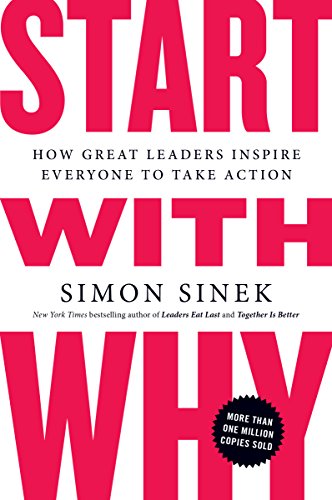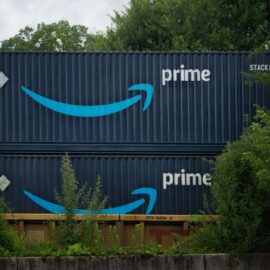

This article is an excerpt from the Shortform summary of "Start With Why" by Simon Sinek. Shortform has the world's best summaries of books you should be reading.
Like this article? Sign up for a free trial here .
Simon Sinek has written extensively on Apple. Why? What is the key to Apple’s massive success? What are the views of Simon Sinek on Apple?
According to Simon Sinek, Apple’s success is based on its clear understanding of its own purpose. We’ll cover Simon Sinek’s insight into Apple’s success, and why Sinek uses Apple in so many of his examples in his book Start with Why.
Simon Sinek on Apple, Lesson #1: Define Your “Why”
Your WHY is your central belief. It’s the concept that motivates you to get out of bed in the morning. In terms of an organization, it’s the reason you’re in business. According to Simon Sinek, Apple does this extremely well, and it’s the key to Apple’s success.
The WHY leads to the HOW and the WHAT:
- The WHY: This is the vision of your company. It’s the motivation behind your service or product. It’s the mission that you stand for.
- The HOW: The HOW are the practical steps you need to take to achieve your WHY. The HOW is the practical, operational knowledge that brings the vision to life.
- The WHAT: The WHAT is the product or service your selling. It’s the tangible part of your company, and it’s also the easiest to identify.
As an example, Simon Sinek uses Apple:
- WHY: We think differently. We want to challenge the status quo.
- HOW: The way we do this is by making products that are easy to use, elegant, and well designed.
- WHAT: And we just happen to make computers as our products.
Certain companies and leaders inspire people around them to achieve amazing goals. They mobilize people beyond using personal incentives and rewards – instead, they make people feel a sense of purpose and belonging to a community. According to Simon Sinek, Apple is one of these companies.
These effective leaders Start With WHY – they communicate the purpose of what they are doing and the impact their work will have.
Simon Sinek on Apple, Lesson #2: Set the Standard for Your Field
Those who lead aren’t necessarily #1 terms of market share, but they’re the companies or people who are setting the course for their industries. Simon Sinek says Apple computers only make up 3 percent of the global home computing market share; however, Apple leads the technology industry because of its impact and vision. Other technology companies are trying to become Apple, not the other way around.
Great leaders:
- Create a following of loyal people who rally around their WHY.
- Inspire people to act because they want to, not because they’re responding to an outside incentive.
- Belong to all different sectors and aren’t just business tycoons or politicians. Great leaders can come from any walk of life or industry.
- Have exceptional amounts of influence inside and outside of their industries.
Simon Sinek on Apple, Lesson #3: Be Innovative, Not Novel
Novelty — defined as being “new” or “unusual” — is often marketed as “innovation.”
But novelty and innovation are very different from one another.
- Novelty is merely introducing something new and will eventually fade into the past. Novelty is more a gimmick than a real improvement.
- Innovation is change that is valuable and persists in the industry well into the future. It is real reinvention, in ways that matter to customers in the long-term.
Ultimately, novelty tricks consumers into thinking that a product or service is innovative when it’s not.
We can see the difference between novelty and innovation when we look at two “innovative” phones: the Motorola RAZR and the Apple iPhone.
- The RAZR was billed as “innovative” and future of mobile phones because it featured innovations like “aircraft-grade aluminum” and a “chemically-etched keypad.” While they sold a lot of phones initially, within four years, Motorola stock was trading at 50 percent of its former value. What was supposed to be innovation was actually novelty – it didn’t last.
- The iPhone was marketed much like the RAZR: as the future of mobile phones. But unlike the RAZR, the iPhone really was innovative, and, Sinek claims, not because of the touch screen and removing buttons. The iPhone changed how the phone industry worked by telling phone manufacturers what their phone would do (rather than phone manufacturers deciding what features they’d support). This was a lasting change that continues today.
Whenever companies introduce multiple minor variants of a product, that’s a sign that they’re just practicing novelty instead of innovation, like Colgate’s thirty-two types of toothpaste. According to Simon Sinek, Apple’s focus on innovation rather than novelty sets it apart.
Simon Sinek on Apple, Lesson #4: Combine WHY with HOW
Strong, charismatic leadership that starts with WHY is critical. But most WHYs need a practical HOW to help translate their vision and passion to the rest of the organization. According to Simon Sinek, Apple’s Steve Jobs and Steve Wozniak were the ideal balance of why and how.
WHYs are big-idea optimists who believe all of their ideas are possible. HOWs live in reality and are better at building the processes that bring those bold ideas to life.
WHYs have the vision and imagination needed to change industries, but they often don’t know HOW to do it. HOWs have the ability to create change, but they don’t have the vision to know what changes to make.
WHY types live in the future, and HOWs live in the present. WHYs are dreamers, while HOWs are practical.
WHY types and HOW types are capable people who can run businesses without the other. But in order to build a world-changing movement or organization, both need to exist. Without a strong HOW, inspirational WHY leaders have big ideas but struggle to execute them.
Here are some famous examples of WHY and HOW partnerships that have changed the world:
- Disney: Walt Disney (WHY) and Roy Disney (HOW)
- Apple: Steve Jobs (WHY) and Steve Wozniak (HOW)
- Microsoft: Bill Gates (WHY) and Paul Allen (HOW)
Simon Sinek believes Apple’s commitment to always starting with WHY has led to its enormous success. Use his four lessons to start with why in your own business.
———End of Preview———

Like what you just read? Read the rest of the world's best summary of "Start With Why" at Shortform . Learn the book's critical concepts in 20 minutes or less .
Here's what you'll find in our full Start With Why summary :
- What Steve Jobs did right compared to every other business leader
- How to define your organization's WHY
- How to help your organization avoid losing its edge as it succeeds






